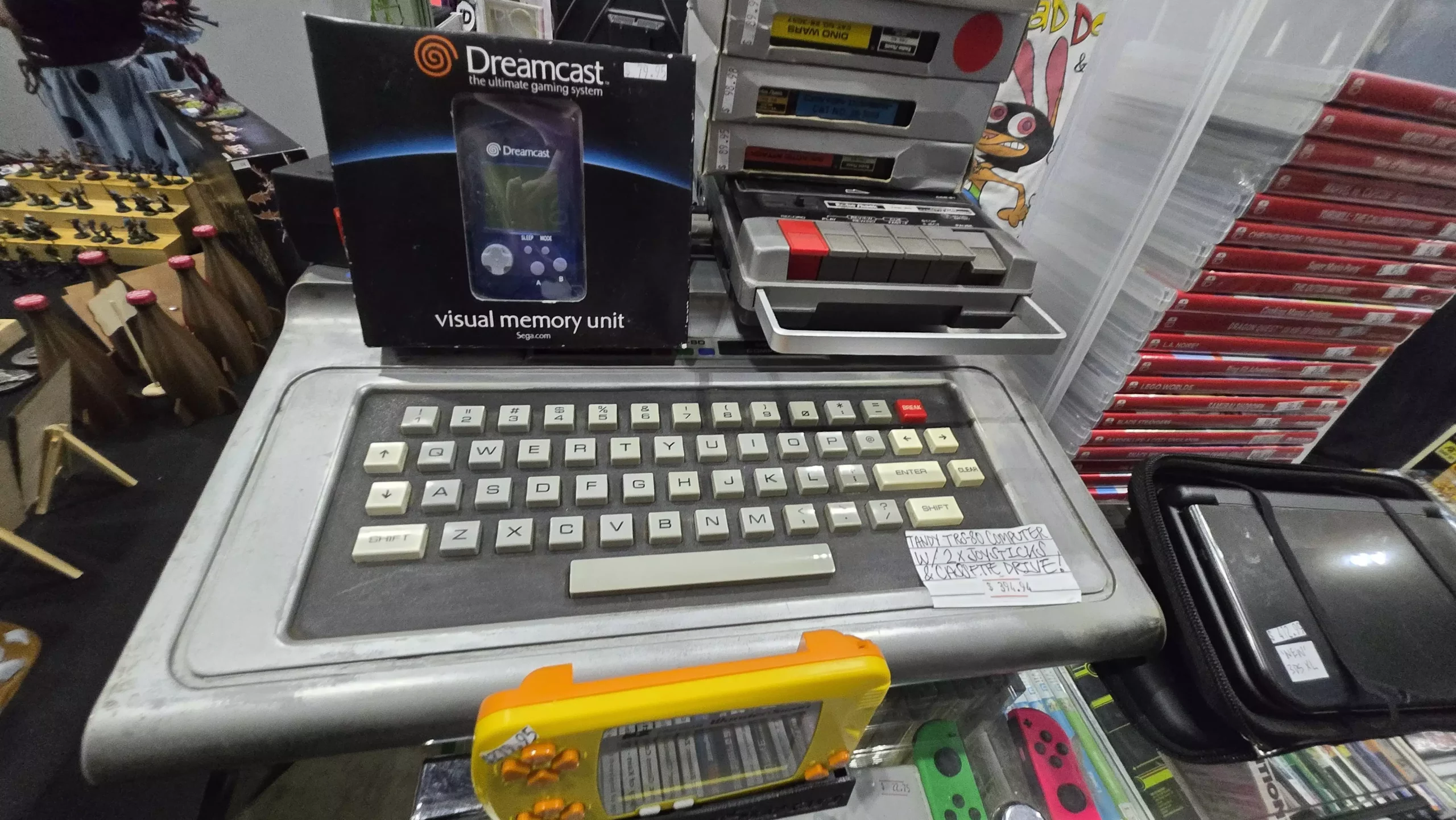This past weekend, I immersed myself in a peculiar gathering that epitomizes the paradox of modern capitalism—Collect Fest at the Melbourne Convention and Exhibition Centre. Set amidst the vibrant chaos of PAX Australia, this event functions as both a tribute to nostalgia and a marketplace driven by consumer obsession. On the surface, it’s a carnival of collectibles, a haven for hobbyists eager to trade and display their prized possessions. However, beneath this colorful façade lies a stark reality: for all its riches of vintage gaming paraphernalia, it conspicuously neglects one vital aspect—PC gaming hardware. This omission isn’t just an oversight; it’s symptomatic of a broader disconnect within the collecting community and perhaps even within the culture of gaming itself.
The event’s architecture is an ode to consumerism’s allure—rows of booths overflowing with colorful boxes, modded handheld consoles gleaming under bright lights, and enthusiastic sellers pitching their wares. Enthusiasts of all ages hover around tables filled with retro cartridges, posters, and gaming memorabilia, exchanging stories about their favorite titles and consoles from decades past. The nostalgic air is thick, yet, curiously, the raw digital roots of gaming—PC hardware—are almost invisible in this landscape of tangible nostalgia.
The Absence of PC Hardware: An Oversight or a Trend?
One of the most striking revelations from my exploration was the conspicuous scarcity of PC-related items. Despite the event’s extensive breadth—covering everything from vintage consoles and mods to collectibles—PC hardware was virtually absent. A solitary exception was a lone Tandy TRS-80 computer encased in glass, priced at a steep $400 Australian dollars, complete with peripherals that harken back to the earliest days of personal computing. The absence of more modern or even classic PC hardware signifies an ongoing shift in what collectors deem collectible or even valuable.
This dearth can be attributed to a combination of practical and cultural factors. First, PC hardware tends to have a high turnover—components become obsolete quickly, and collecting pristine models demands significant space and maintenance. Additionally, the high cost and complexity of maintaining vintage PC setups discourage casual collectors. More importantly, the gaming industry’s pivot towards digital distribution and online connectivity has diminished the physical CD or DVD culture that once flourished. Physical copies of PC games like “Half-Life” are now relics of an era, often replaced by digital downloads, reducing the tangible essence that collectors chase.
In contrast, handheld gaming devices, especially modded Nintendo Switch, DS, and GameBoy units, dominate the scene. These devices, often customized with OLED screens and intricate mods, enjoy a thriving secondary market. The emphasis on handhelds over traditional PC hardware suggests an evolving collector’s preference—a movement towards portable nostalgia that is easier to display, modify, and demonstrate.
The Shift in What Matters: From Hardware to Modding and Provenance
Another insight worth examining is the community’s focus on modification and aesthetic upgrades rather than raw hardware value. The stalls prominently feature modded GameBoys and handhelds, fetching high prices and generating palpable enthusiasm. One stall, 56Bits, reported a single customer spending over a thousand dollars solely on modded and vintage handhelds. The allure lies not only in nostalgia but in the craftsmanship and personalization that these modifications entail.
This trend indicates a broader cultural shift: collectors and enthusiasts increasingly value the story and uniqueness behind an item rather than its original condition or hardware specifications. The modded handhelds symbolize a hybridization of the old and the new—a tangible link to childhood memories combined with modern technology enhancements. This focus reflects a desire to connect with the past in a personal and commodifiable way, rather than simply preserving equipment for its hardware or software’s sake.
The neglect of PC hardware also reveals an economic dimension. Stocking vintage PC gear is a gamble—demand is unpredictable, and prices can be prohibitively high. The community’s attention to handhelds and consoles is a pragmatic response to the market’s preferences, favoring items with proven demand and easier resale value. This underscores how the collecting ecosystem is not only driven by nostalgia but also molded by market forces, technological trends, and the ease of display and use.
What Collecting Tells Us About Gaming’s Future
The absence of PC hardware at Collect Fest symbolizes more than just a gap in inventory—it reflects a shift in how we perceive gaming history and value. For decades, PC gaming was the birthplace of innovation, modding, and hacker culture. It fostered a community that treasured physical media, hardware tinkering, and the craftsmanship behind custom setups. Today, that ethos seems to have been marginalized in the face of sleek, portable devices and digital distribution.
However, this doesn’t mean PC gaming’s legacy is fading—it is simply evolving. The community’s focus on portable mods and aesthetic customizations hints at a desire to keep the spirit alive, even if the form changes. The future of collecting may lie more in storytelling, provenance, and the personalization of hardware rather than in pristine vintage gear stored away in glass cases.
This transition raises questions about what it means to preserve gaming history. Collectibles are now less about hardware and more about experience, aesthetics, and personal identity. The scene at Collect Fest exemplifies this—a celebration of nostalgia that privileges emotional connection over archival authenticity. For those of us who value the roots of gaming, it’s a poignant reminder that preserving history isn’t just about hoarding old hardware; it’s about understanding why it matters and how it’s perceived in a modern context.
While Collect Fest offers a glimpse into the passionate world of physical collectibles, it also prompts us to question which pieces of gaming’s history will endure. As digital infrastructure continues to dominate, traditional hardware collecting risks becoming a niche, with memories fading behind the screens and pixels of a digital age. Yet, the yearning for tangible artifacts remains—a testament to our innate desire to hold onto the past as we forge ahead.

